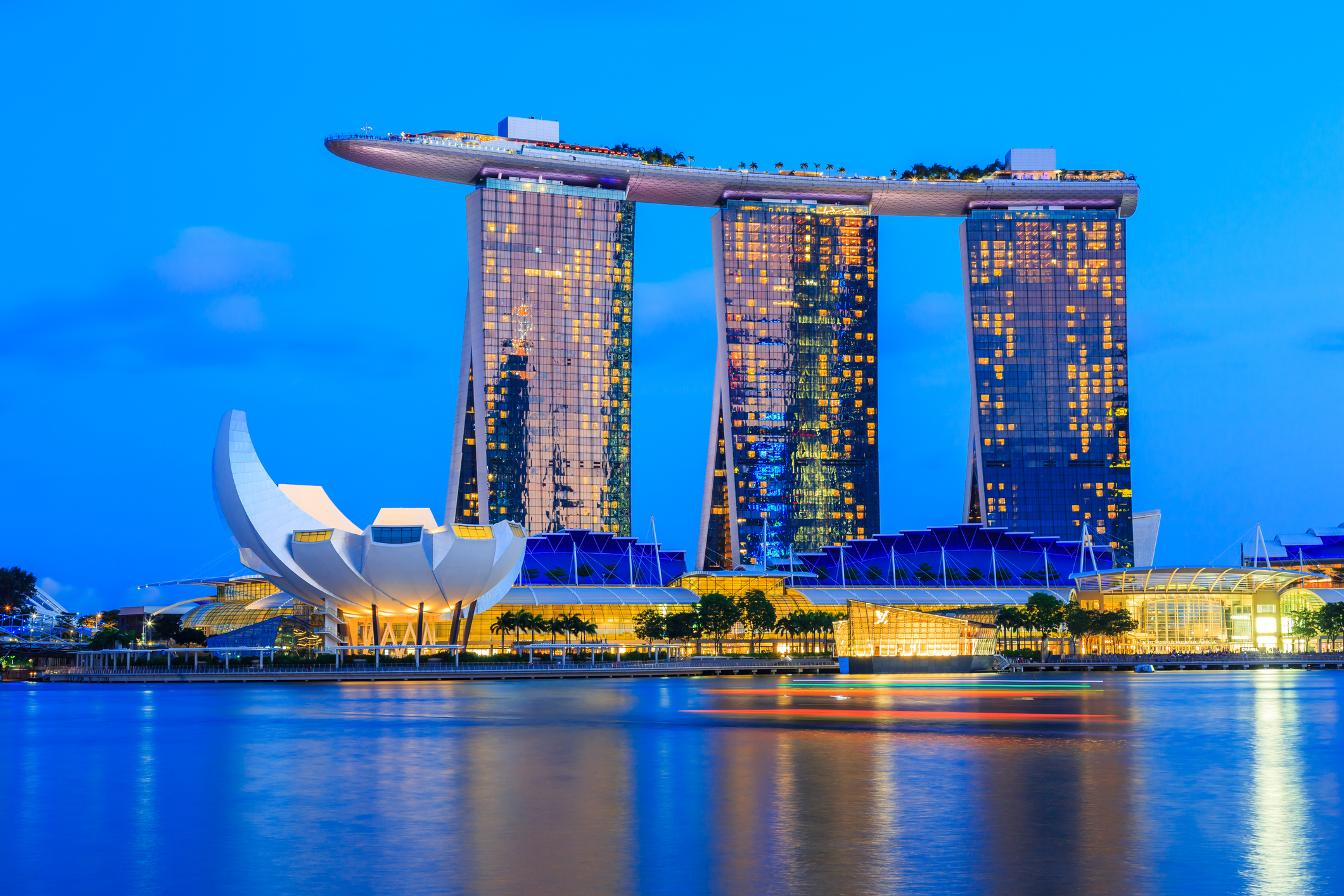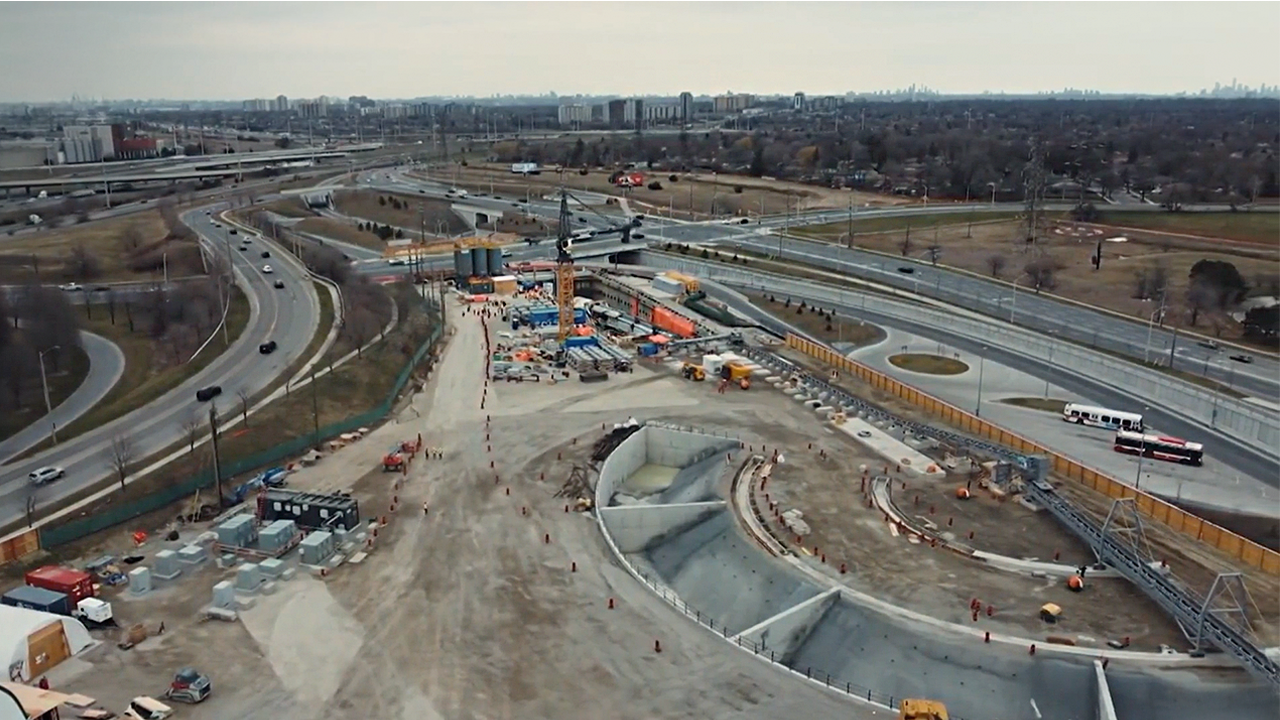Dubai Has Built the World’s Tallest and Largest Observation Wheel
- Youtube Views 1,048,611 VIDEO VIEWS
Video hosted by Fred Mills.
When the London Eye opened in 2000 it was intended to be a temporary attraction - but it proved so popular that it became a permanent fixture of the skyline, making towering observation wheels the new must-have landmark of the new millennium.
Since then, more than 18 giant observation wheels have been built around the world - but despite the title of “world’s tallest” changing hands three times, the actual height of the tallest observation wheel has only risen from 135-metres in 2000, to 169-metres in 2014 when Las Vegas completed the High Roller.

Above: Ain Dubai dwarfs the world's other great observation wheels.
Echoing the extreme height increase that saw it claim the title of World’s Tallest Building, Dubai’s latest record-breaking attraction takes engineering to the limits, with an observation wheel that’s nearly double the height of the London Eye.
Located just off the coast of Dubai Marina on the man-made, Bluewater’s Island, Ain Dubai - or the "Eye of Dubai" - is now officially the world’s tallest and largest observation wheel - standing over 250 metres tall and with a capacity of 1,750 passengers at any one time.
82 metres taller than its predecessor, Ain Dubai represents the single greatest increase in height for this type of structure - something that could have only been achieved in a place like Dubai.
Originally set to stand 210 metres tall when it was first proposed back in 2013 the wheel was redesigned and scaled up to a size that would require 33% more steel than was used in the Eiffel Tower.

Above and Below: Bluewater's Island is home to the Ain Dubai but carries very little of the structure's overall weight.

An artificial island, which is essentially compacted sand, might not seem like the best place to build something of this magnitude, but the reclaimed land itself doesn't actually bear much of the wheel's weight at all.
Drilled to a depth of 35-metres, Ain Dubai’s foundation piles extend five metres into solid bedrock, completely bypassing the reclaimed land - Bluewater’s Island only provides lateral support for the structure.
With a solid base to build on, the hard work really began with the four legs. Each is 126-metres in length, that’s just nine-metres shorter than the London Eye’s overall height.
The biggest challenge for engineers didn't actually come from the leg’s size, but from keeping them standing at a precise angle while the hub and spindle were fitted - they tie everything together and make the structure self-supporting.

Above: Two of the world's largest cranes were required for the project. Image courtesy of Meraas.
With approximately four weeks of 24/7 welding just to get the legs joined to the spindle, the project required two of the world's third largest cranes to lift the 1,800 tonne hub and spindle into place.
Observation wheels may look lightweight and simple once complete, but getting them to a point where they are self-supporting and won’t buckle under their own weight is an extreme structural challenge - and the temporary support structure that makes it happen is like building a whole second wheel within the rim itself.
Once the outer rim was complete, the supporting structure was removed by working backwards, progressively replacing the bulky structural steel elements with 192 pre-tensioned, heavy-duty cables that contain enough wire to reach from Dubai to Cairo. That's 2,400 kilometres if you laid it all out flat.
With virtually all of the Ain Dubai's structural integrity coming from the temporary framework up until this point, every element was painted white to match the colour of the finished wheel – that’s not for aesthetic reasons but to prevent the darker and lighter elements from expanding unevenly in the Dubai heat - a phenomenon that could cause the rim to warp and buckle.
With its superstructure complete, the 48 passenger cabins were attached to the outside of the rim in a methodical pattern - all to keep the wheel as close to balanced as possible and to prevent its driving mechanism from becoming over stressed.

Above: The cabins are twice the size and weight as those used on the London Eye. Image courtesy of WSP.
The jacking system that was part of the temporary works is now a permanent and integral part of the structure having been modified with 64 tyres positioned against the rim. They slowly rotate and push the wheel around using friction at a rate of one revolution every 38 minutes.
Designed to carry up to 40 passengers at a time, each cabin is more than double the size and weight of those on the London Eye. Each has been fitted with a driving mechanism that has the fairly fundamental job of rotating it at the same speed as the wheel but in the opposite direction so that the floor stays horizontal no matter where it is in the rotation.
If all the passengers decide they wanted to go out to one side um in a Ferris Wheel but as you might imagine the gondola would all rotate and it would start tipping this experience doesn't happen because it's all driven and still we have a perfectly horizontal floor for the passengers.
Originally set to open ahead of Expo 2020, like most things last year, that just didn't happen. Ain Dubai is now set to open on October 21st, although press and invited guests will have already been for a ride.
While some other great observation wheels have failed to achieve the same popularity as the London Eye, Ain Dubai’s incredible height and unobstructed views will undoubtedly make it the newest landmark in what’s now a city of engineering triumphs.
Video narrated by Fred Mills. Special thanks to Darren Brooke, WSP, Dubai Holding and Meraas. Additional footage and images courtesy of Propsearch.ae, Gizmo Drones and Earthstar Geographics.
We welcome you sharing our content to inspire others, but please be nice and play by our rules.








